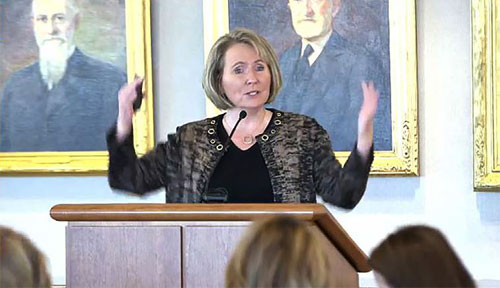Brice Wallace
Worst for women’s equality.
It’s a label that Utah hasn’t been able to shake — indeed, its hold on the title has lasted for years — but a recent study indicates that a series of changes in the workplace, in education and in politics could break Utah from its hold on the unwanted title. The thinking is that more equity and equality for all Utahns will strengthen families, organizations and communities throughout the state.
A report released in August by Wallet-Hub ranked Utah the worst state in the nation for women’s equality. It was the fourth consecutive year for Utah to be bottom-ranked in that analysis, but Susan Madsen, founder and director of the Utah Women and Leadership Project at Utah State University, recently noted that Utah been ranked poorly in other rankings as well and that those unflattering showings have existed for decades.
“Ranks are important in perceptions but they’re not the only things that are important, right? We don’t want to be known as the worst state for women’s equality. That’s not something we really want. We want to change that,” Madsen said during a gathering at Zions Bank’s headquarters in Salt Lake City to announce the findings of a report dissecting the WalletHub analysis.
“Yet even deeper, we want women to thrive in the state, so the rankings and numbers can be important on one end, but on the other, the most important to me is that we have more women understanding their value, that they have confidence, that they lean in, that they get treated fairly and not experience discrimination and those things.”
WalletHub compared the 50 states across 17 key indicators of women’s equality, many of them related to business, such as the gap between the number of female and male executives, the disparity in unemployment rates for women and men, and gender differences in education and health.
Among the WalletHub findings are that in Utah, women’s median weekly earnings are 25 percent less than men’s. Annual earnings for women average $39,784 while men get about $57,000. Women are nearly twice as likely than men to earn at or near the minimum wage. The pay disparity is strong at high-income levels, with 18.9 percent of men but only 5.9 percent of women earning $100,000 or more per year.
More than 10 percent of Utah non-elderly women live at or below the poverty line, compared to 8.3 percent of men.
Women also are less likely to hold executive-level positions. The WalletHub study also indicated that among full-time workers, men work 40.5 hours per week while women work 33.3 hours.
“This is the one that turns my stomach because we’re just saying women should work more,” Madsen said. “Actually, women work a lot. We do all kinds of unpaid work.”
The Utah Women and Leadership Project pored over the WalletHub analysis and recommended several actions to help Utah emerge from the bottom.
The Utah Women and Leadership Project’s workplace recommendations include:
• Raising the minimum wage by $2.
• Increasing the number of women who earn over $100,000 by 3,700.
• Adding 780 women to executive positions within the state.
• Finding solutions to shift more women out of minimum-wage jobs.
• Finding jobs for 686 women to reduce the unemployment rate by 0.1 percent.
• Adding 1,000 women-owned business in Utah.
• Supporting female employees by creating flexible and family-friendly policies.
• Continuing efforts regarding job security metrics.
• Focusing on economic security for Utah women.
• Reducing the disparity between men and women in poverty by 0.4 percent.
Among the recommendations related to education and health are boosting the percentage of Utah women completing graduate degree programs. Most of the top 10 overall recommendations are connected to political empowerment and focus on electing more Utah women to federal and state positions and adding women to statewide executive positions.
The full, 29-page report is at https://www.usu.edu/uwlp/files/wp/no-4.pdf.
Utah has the circumstances and environment to choose to help women be respected, thrive and “earn the money they deserve,” Madsen said.
“And I truly believe that when we do that, that we will get to a different level in the state of Utah, where people won’t just judge us: ‘Well, this is a state that doesn’t support women.’ That’s an important image to change for our state,” she said.
“Yet when they look at the state of Utah in the future, they will say, ‘That’s the place I want to be. That’s the place I can thrive. That’s the place my family will be accepted and loved and we can stay here and contribute to the community.’ And that’s what it’s all about to me — that everyone be able to thrive in Utah, including girls and women.”








